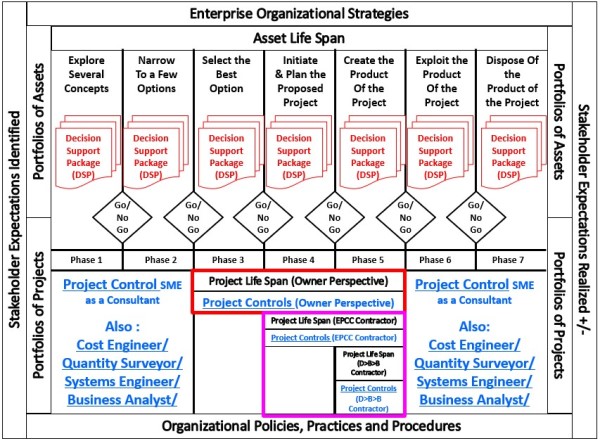using Guild Management Techniques
STUDENT PAPER
By RAMA SUBBU Naveen Aravind
SKEMA Business School
Paris, France
ABSTRACT
The construction industry is a noteworthy catalyst to the development of the country’s financial advancement. The frequent delay of the substantial construction project has been a wonder and it impacts the execution of the vital planning. This paper introduces the discoveries of study of prevailing reason for delays in construction project in the point of view of project management. The outcome uncovered that the five most huge defer causes as observed by were income and budgetary troubles looked by contractual workers, temporary worker’s poor site management, deficient contractual worker encounter, lack of site specialists and inadequate arranging and booking by contract workers. All the causes are gathered into 5 main causes such as 1) project category, which grouped factors related with the project itself; (2)human category, involving the factors affecting the laborers;(3) management or organizational category for those factors referred to planning, management, scheduling and supervising issues; (4) materials and tools category, grouping factors related with the supply or shortage of materials, tools, equipment or machinery; and finally (5) environmental factors category[1]. Ideally, the discoveries of this examination will at any rate shade a few lights to the issues looked by expansive development venture and exertion can be taken to enhance it.
Keywords: Construction, Control, Delay, Planning, Project Management, Time Overrun, Building Information Modeling (BIM)
INTRODUCTION
“Construction is one of the major industries worldwide.”[2] The construction industry is about to reach an “estimated $10.5 trillion by the next 5 years, and it is forecast to grow at 4.2% from 2018 to 2023.[3]” Although development extends worldwide in developing countries construction industry faces major issues with the delay in construction is one of the significant issues. According to the Guild of Project Controls Compendium and Reference (GPCCAR) “the construction stages, operates through the life span such as 1. Owner practitioner 2. EPCC or Design>Build Contractor and 3. “Design>Bid>Build” or Firm Fixed Price Contractor[4]

Figure 1. Process grouping in Project life span phases[5]
In this the owner practitioner operates throughout the Asset life cycle. And the contractor practitioner operates in a smaller cycle i.e. within the project life cycle. In figure 1 phases 1, 2, 3, 4, 5, 6, 7 represents the “Asset life cycle” and only three phases represent “Project life cycle”. Phase 1 is exploring several concepts i.e. to brainstorm several concepts, ideas and developing the initial schedules, cost estimates and budgets. Phase 2 is doing the feasible analysis on all the best ideas and narrow it to 2 to 3 best suitable options. In phase 3 select the best options that suits the project with all the stakeholders and practitioners. This is the starting of the “project life cycle”. Step 4 is the initiation of the project. Refine the project plan, scope, risk, schedule and budget in this phase. Phase 5 is to execute the project as per the plan. The phases 6 and 7 are the “Operate” and “Disposal” phases. Since Project Control specialists can assume two jobs – as Subject Matter Experts (Phases 1, 2, 6 and 7) OR as Key Project Team Members (Phases 3, 4 and 5) our jobs and duties will change and will be characterized by the requirements of the project sponsors and additionally project managers, contingent on the stage we are in. Despite which stage we are in, the essential expectations that we are dependable to create are information and the related examination and projections to empower that Phase to advance.[6]
More…
To read entire paper, click here
Editor’s note: Student papers are authored by graduate or undergraduate students based on coursework at accredited universities or training programs. This paper was prepared as a deliverable for the course “International Contract Management” facilitated by Dr Paul D. Giammalvo of PT Mitratata Citragraha, Jakarta, Indonesia as an Adjunct Professor under contract to SKEMA Business School for the program Master of Science in Project and Programme Management and Business Development. http://www.skema.edu/programmes/masters-of-science. For more information on this global program (Lille and Paris in France; Belo Horizonte in Brazil), contact Dr Paul Gardiner, Global Programme Director paul.gardiner@skema.edu.
How to cite this paper: Aravind, R.S.N. (2019). Managing and Controlling Construction Delays using Guild Management Techniques, PM World Journal, Vol. VIII, Issue VII, August. Available online at https://pmworldlibrary.net/wp-content/uploads/2019/08/pmwj84-Aug2019-Aravind-managing-and-controlling-construction-delays.pdf
About the Author

RAMA SUBBU Naveen Aravind
Paris, France
![]()
![]()
Naveen Aravind is a Civil Engineering professional with 2+ years of experience in construction and construction management. Born in Tamil Nadu, India, he studied Engineering practices and gained a bachelor’s degree in civil engineering in India, before starting his master’s degree he worked as a civil engineer in India for 2 years and then he got an opportunity to work in an International exposure as a Civil Engineer in Oil and Gas sector in Oman. He further continued his studies by doing master’s in project management and Business Development in France. In his course he was doing International Contract Management under the tutorage of Dr Paul D. Giammalvo, CDT, CCE, MScPM, MRICS, GPM-m Senior Technical Advisor, PT Mitrata Citragraha, to attain Guild of Project Controls certification.
Naveen Aravind lives in Paris, France and can be contacted at aravindhnaveen1@gmail.com
[1] Labor Productivity in the Construction Industry -Factors Influencing the Spanish Construction Labor Productivity. (2018). Retrieved from https://waset.org/publications/9999560/labor-productivity
[2] World Construction Industry | Economy Watch. (2018). Retrieved from http://www.economywatch.com/world-industries/construction/world.htm
[3] Markets, R. (2018). Growth Opportunities for the Global Construction Industry 2018-2023 – A Potential $10.5 Trillion Market. Retrieved from https://www.prnewswire.com/news-releases/growth-opportunities-for-the-global-construction-industry-2018-2023—a-potential-105-trillion-market-300578103.html
[4]GUILD OF PROJECT CONTROLS COMPENDIUM and REFERENCE (CaR) | Project Controls – planning, scheduling, cost management and forensic analysis (Planning Planet). (2018). Retrieved from http://www.planningplanet.com/guild/gpccar/introduction-to-managing-project-controls
[5] GUILD OF PROJECT CONTROLS COMPENDIUM and REFERENCE (CaR) | Project Controls – planning, scheduling, cost management and forensic analysis (Planning Planet). (2018). Retrieved from http://www.planningplanet.com/guild/gpccar/introduction-to-managing-project-controls
[6] GUILD OF PROJECT CONTROLS COMPENDIUM and REFERENCE (CaR) | Project Controls – planning, scheduling, cost management and forensic analysis (Planning Planet). (2018). Retrieved from http://www.planningplanet.com/guild/gpccar/introduction-to-managing-project-controls









